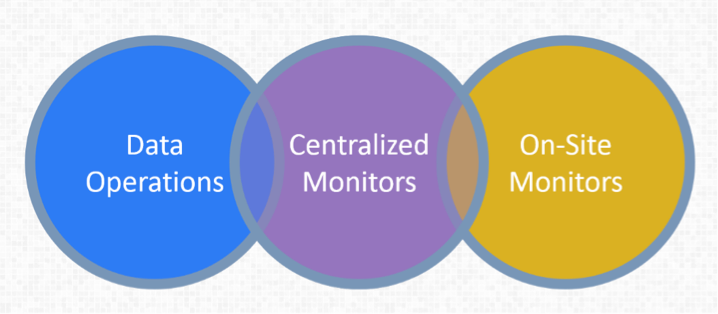How Bristol-Myers Squibb is doing Risk-Based Monitoring
Thomas Verish, Group Director of Data Operations Services at Bristol-Myers Squibb, elaborated on their risk-based monitoring pilot.
During the 2014 Bio IT World conference, Thomas Verish, Group Director of Data Operations Services at Bristol-Myers Squibb (BMS), elaborated on their risk-based monitoring (RBM) pilot, and how they are leveraging data, statistical analysis and personnel to execute RBM.
BMS’ RBM Infrastructure: How Is It Built?
Figure 1 illustrates BMS’ RBM infrastructure and engagements between defined roles. The data operations group serves a similar function as current data management groups. The centralized monitoring group is dedicated to identifying unusual trends in data, which triggers on-site monitors to investigate these unusual trends. Verish indicated that centralized monitors are champions for changing existing clinical operations practices, and they are equipped with strong analytical, communications, and critical thinking skills, as well as knowledge on GCP and experience with clinical operations.
One of the early hurdles that BMS faced in implementing its RBM model included resistance from personnel due to changes in roles and responsibilities. Concerns were addressed through an effective change management program focused on education and communication.
Figure 1: BMS’ RBM Operational Infrastructure

Cost Savings is Not the Focus
Verish made it clear that reducing costs through RBM is not the focus (we analyzed RBM cost savings potential for Amgen, and we estimated a less than 2% annual reduction in overall R&D costs). Rather, the focus is quality by design operations and signaling for early error detection through risk based analytical assessments. The group uses key risk and performance indicators (KPI/KRIs), by establishing analytical parameters and triggers, and operationalizes these parameters through RBM plans.
Hung up on Early Phase Trials
One of the challenges in executing RBM includes the lack of analytical/operational data in early phase trials, which makes defining KPI/KRIs a challenge. One way around this challenge involves sharing operational information with other biopharmaceutical enterprises in the Transcelerate consortium, according to Verish.
Is BMS Developing its RBM Strategy Correctly?
There is no right or wrong way to conducting RBM, as the FDA has left its guidance document on RBM open for biopharmaceutical sponsors to customize risk-based models to company business infrastructures and SOPs. Nonetheless, BMS is adopting an RBM model that is similar to Amgen’s, which involves in-house centralized monitors determining risk parameters, identifying analytical inconsistencies in data quality and triggering on-site monitors to inspect these unusual trends.
Next Steps
Verish intimated that the next steps for BMS will involve focusing on educating and developing people, process improvement, identifying technological needs, and sharing experiences with the RBM pilot.